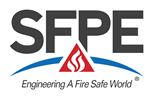FEMTC 2020
Fire In A Naturally Ventilated Room: A Comparison Between Real-Scale Tests And FDS Simulation 
Riccardo Mattia Candido - Cantene S.r.l
Abstract
The present paper describes a series of full-scale tests on enclosure fire carried out by authors, and the comparison with FDS simulations of same scenarios.
The case study is a naturally ventilated room, similar to those included in many office buildings and dwellings. The occurrence of a fire in this kind of rooms includes many issues from the point of view of life safeguard: (i) small rooms are usually not equipped with extinguishing systems or smoke / heat control systems; (ii) limited ceiling height leads to quick de-stratification of smoke and therefore deterioration of tenability conditions.
Full-scale experiments were carried out in a masonry building, internally arranged in a corridor and some rooms. The effect of different strategies involving the opening of doors and windows was observed, focusing on how this affects the distribution of smoke and tenability conditions. Then, FDS simulations were developed in order to compare results with experimental data. The comparison was done taking into account gas temperature, smoke layer height, oxygen concentration and visibility. A sensitivity analysis was carried out on some parameters as HRR curve, material thermal properties, and soot yield.
Results of experiments and FDS simulations are here presented, discussed and compared with similar tests described in technical and scientific literature.
Presentation
Resources
| Paper | Presentation | ||
|---|---|---|---|
| HTML | HTML | ||
| Resources Archive File (.zip) | |||

